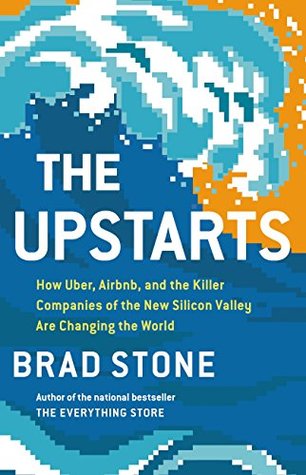More on this book
Community
Kindle Notes & Highlights
by
Brad Stone
Read between
September 25 - October 10, 2017
Both startups offered age-old ideas (share a vehicle, rent your home) with new twists and ended up fostering a remarkable degree of openness among people who had never previously met.
At the center of this maelstrom are the young, wealthy, charismatic chief executives: Travis Kalanick and Brian Chesky. They represent a new kind of technology CEO, nothing at all like Bill
Gates, Larry Page, and Mark Zuckerberg, the awkward, introverted innovators who typified the previous generation of tech leaders. Instead, they are extroverted storytellers, capable of positioning their companies in the context of dramatic progress for humanity and recruiting not only armies of engineers but drivers, hosts, lobbyists, and lawmakers to their cause.
It is instead a book about a pivotal moment in the century-long emergence of a technological society. It’s about a crucial era during which old regimes fell, new leaders emerged, new social contracts were forged between strangers, the topography of cities changed, and the upstarts roamed the earth.
Every great startup starts as a side project that isn’t anybody’s main priority.
“On the East Coast you give money to charity,” Seibel says. “On the West Coast in the startup world, if you want to give back, you help young founders. This is a game where karma matters.”
“We focused too much on what they were doing at the time and not enough on what they could do, would do, and did do.”11
Silicon Valley’s startup scientists have a name for this phase in a company’s gestation; they call it the Trough of Sorrow, when the novelty of a new business idea wears off and the founders are left trying to jump-start
an actual business.
Cockroach was Graham’s word for an unkillable startup that could weather any challenge, and it was the highest possible compliment in his startup lexicon.
This is the cruel reality of startup investing—financiers are betting on a future they can’t see.
Internet marketplaces thrive when buyers and sellers are matched in ways that wouldn’t otherwise be possible, saving everyone time and money.
The startup hadn’t solved the tricky chicken-and-egg problem that confronts the creators of online marketplaces. The relatively few listings on the site drew few guests looking for travel accommodations, and the paucity of guests didn’t inspire potential new hosts to embrace the unorthodox concept of making their homes available to total strangers over the internet.
Growth hackers use their engineering chops to find clever, often controversial ways to improve the popularity of their products and services.
marketing-minded engineer
everyone is going to give you advice,” Kalanick told him. “Ask for the story behind the advice. The story is always more interesting.”
The company was exhibiting an elusive phenomenon called negative churn, in which users who joined the service were more likely to stay
with it and gradually increase their frequency of use than they were to leave. In
unicorn—not Sofiane Ouali’s white 2003 Lincoln Town Car but tech startups valued at more than a billion dollars.
three-person structure in New York. The general manager supervised the overall business in the city and was accountable for its growth.
He or she needed to be entrepreneurial, scrappy, and aggressive in talks with regulators. An operations manager, usually an analytical type like a management consultant or investment banker, was in charge of signing up drivers and making sure there were cars for every passenger who opened the app. Finally, a community manager, a creative type with marketing chops, worked to stimulate demand among riders.
“the SoHo strategy,”
Sending drivers to the places they were needed most would ensure a good experience among the social groups most likely to use Uber; they would then tell their friends, generating demand that would in turn make the service more lucrative to drivers.
“Never ask the question ‘Can it be done?’” he was fond of saying at the time, recalls one employee. “Only question how it can be done.”
when traditional advocacy failed, Uber could mobilize its user base and direct their passion toward elected officials.
Investors tend to ricochet between dueling anxieties: fear of losing money and fear of missing out.
Uber had discovered what startup gurus like to call the virtuous circle, the links between various parts of its business. Lower prices led to more customers and more frequent
usage, which led to a larger supply of cars and busier drivers, which enabled Uber to further cut prices and put more pressure on competitors.


